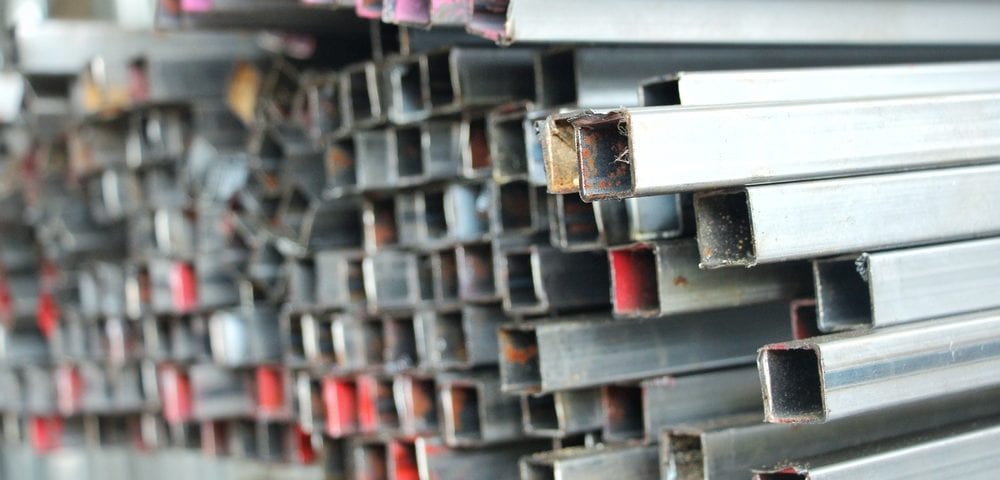Everything You Need to Know About Mild Steel

Lesser-Known Qualities and Applications of Stainless Steel
April 27, 2021
Welded Metal Tube Basics, Value and Weld Types
May 25, 2021There are several different forms of steel available for a huge variety of project or application needs, and one of the most versatile and widely-used is known broadly as mild steel. Especially common in construction and related fields, mild steel is known for its great strength, but also its ability to be machined in several different ways that make it ideal for a few different project types.
At Wasatch Steel, we’re happy to offer a huge range of steel sheet, steel tube, steel bar and numerous other steel products in Utah. We assist clients with obtaining several different steel grades or steel types, including mild steel and a few different variations that come with it. What exactly is mild steel, how does it compare to other similar types, and what are some of its varieties? In addition, what sorts of surface treatments can be used on it, and which applications is it popular for? Here’s a primer on everything you need to know about mild steel.
Mild Steel vs. Carbon Steel
It’s common for mild steel to be confused with carbon steel, and there’s a good reason for this: Mild steel is actually one form of carbon steel, and it’s even sometimes referred to by the alternative title of “low-carbon steel.” This means it has a carbon level that’s between 0 and 0.30% within the steel.
Mild steel is a durable, versatile metal that, as we noted above, is used across a wide range of industries and applications. It can be easily welded in a few different formats, a major benefit to many contractors. It also has both a high tensile strength and high impact strength, which is also valuable, and is magnetic by nature. On the flip side, it is not eligible for heat treatment, and may be prone to rust in some cases. However, there are several basic treatments that will limit or remove this risk (more on this in just a bit).
Mild Steel Manufacturing Method
Mild steel manufacturing involves a similar process to carbon steel, naturally, which includes the combination of coal and iron ore to create the final product. These two materials will be combined together, then will be melted down in a blast furnace.
Once this process has been completed, the steel will be burned additionally to remove any impurities that are present on its surface. From here, it will be moved into the solidifying stage, which is where it’s given its rectangular shape. Finally, if needed, a hot-rolling or cold-drawing process will be used to finalize the precise size of the piece.
Applications
There are numerous applications where mild steel is regularly used. As we noted above, one of the most common on a broad scale is the construction world, where there are a ton of sub-applications for mild steel:
- Fencing
- Bridgework
- Various structural applications
- Reinforcing bars
- Roofing
- Insulation panels
In addition, there are a variety of other applications for mild steel given how versatile and durable it is – and how sustainable it is, meaning it can be used in eco-friendly settings as well. It’s often found in auto components and various other forms of machinery, for instance, and may also be seen on signage, pipes and various industrial fasteners.
Galvanized Mild Steel Qualities
As we mentioned above, one of the potential drawbacks of mild steel on its face is the fact that it’s not corrosion-resistant. This means it may be prone to rust in some settings.
However, a popular and common surface treatment method here is known as galvanization, which is also used on other forms of metal in many cases. This refers to a process where the mild steel is hot-dipped into a zinc solution, which coats the metal and provides a protective coating. Galvanization for mild steel offers better durability, helps lower your maintenance needs, and is also eco-friendly. In addition, it’s more reliable than using paint for the same purpose, and comes with a very quick process and no significant lead time.
Because of the way it’s protected from rusting and other forms of corrosion, galvanized mild steel will often be used for specific types of applications that require this property. It’s regularly found in handrails and railings, for instance, and will also be used for areas like walkways and even gutter setups. It’s also a viable product for exterior support beams. In addition, galvanized mild steel is commonly used across both residential and commercial project needs, as it’s both strong and affordable enough to work in both settings with very few limitations.
Other Surface Treatment Formats
Now, galvanization isn’t the only surface treatment that can be done on mild steel. This is part of the reason it’s considered so versatile – there are several different surface treatments that can be applied to change, enhance or decrease a given metal’s properties in ways that might be valuable for contractors or others.
As we noted above, one of these processes is painting, which is also done to help with corrosion and rust resistance – though in many cases, it will not be as effective or cost-efficient as galvanization for this purpose. Other processes sometimes used include electroplating, chemical treatments, powder coating and more – some of these aid in corrosion resistance, while others change different properties of the steel in some needed way.
For more on mild steel and the various treatment methods possible on it, or to learn about any of our steel products or steel services, speak to the staff at Wasatch Steel today.



